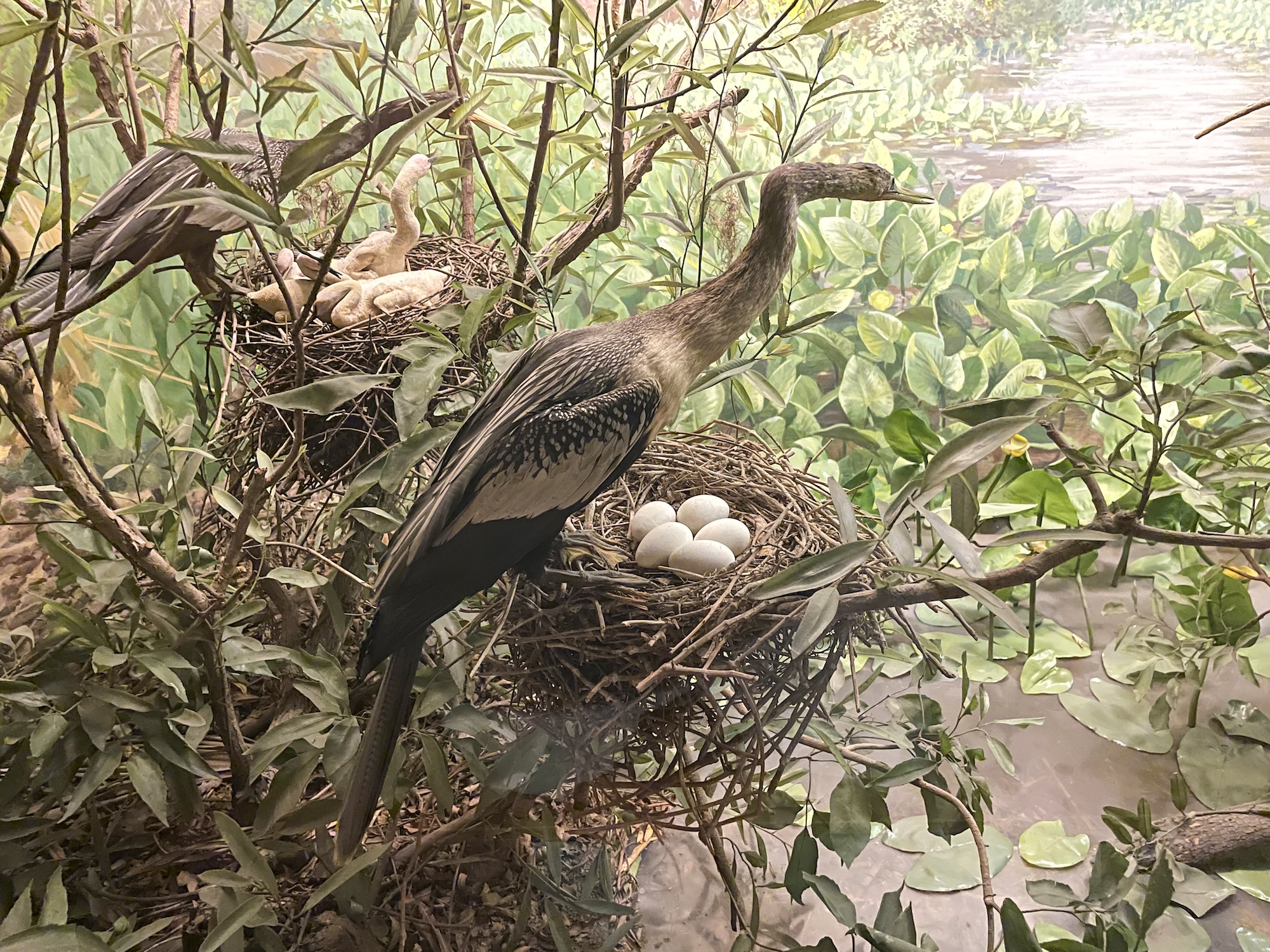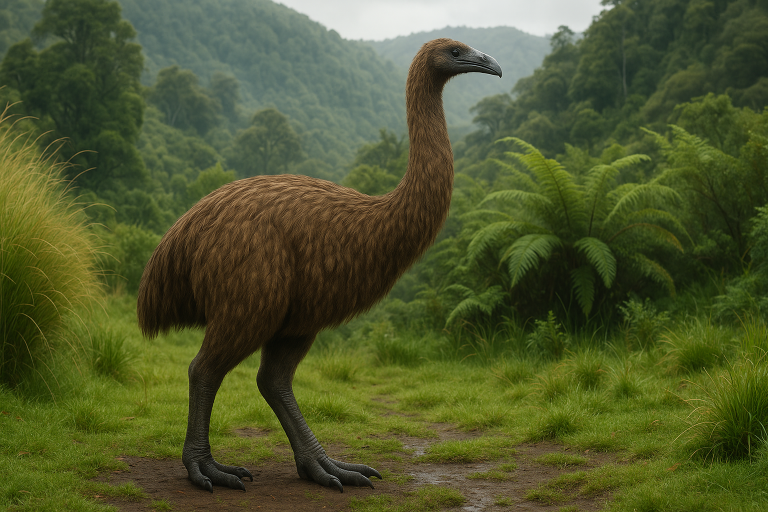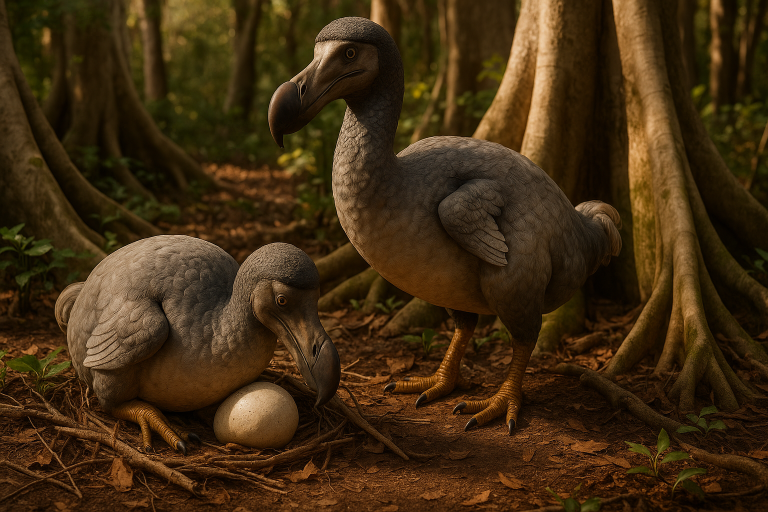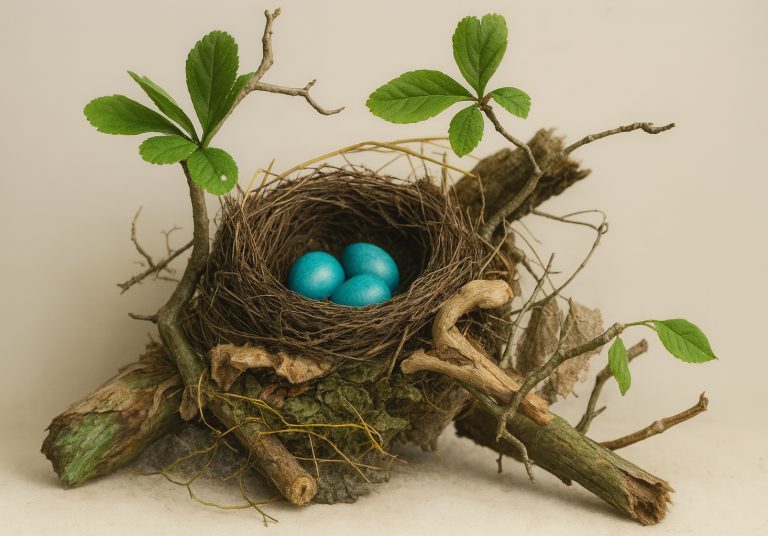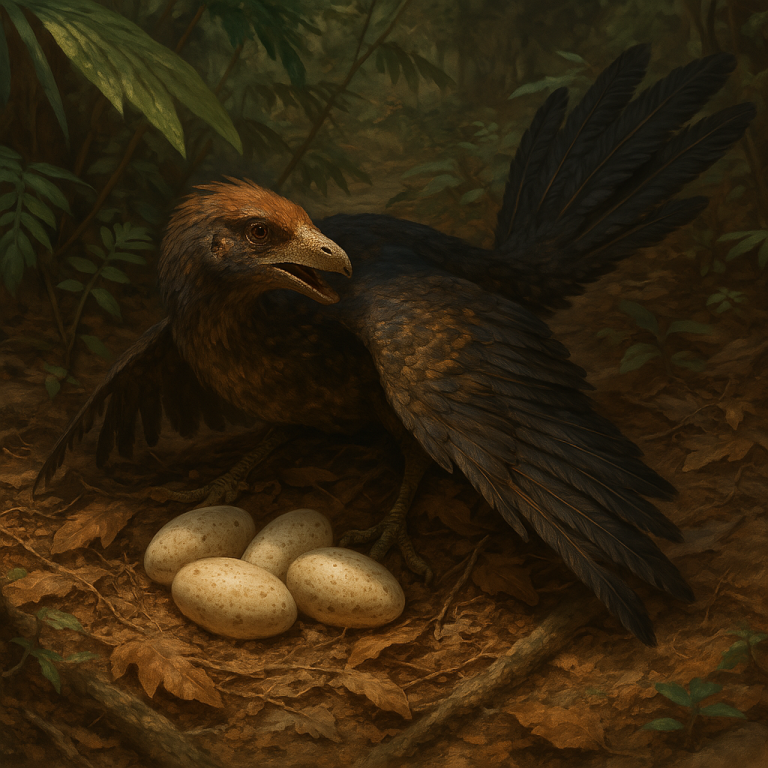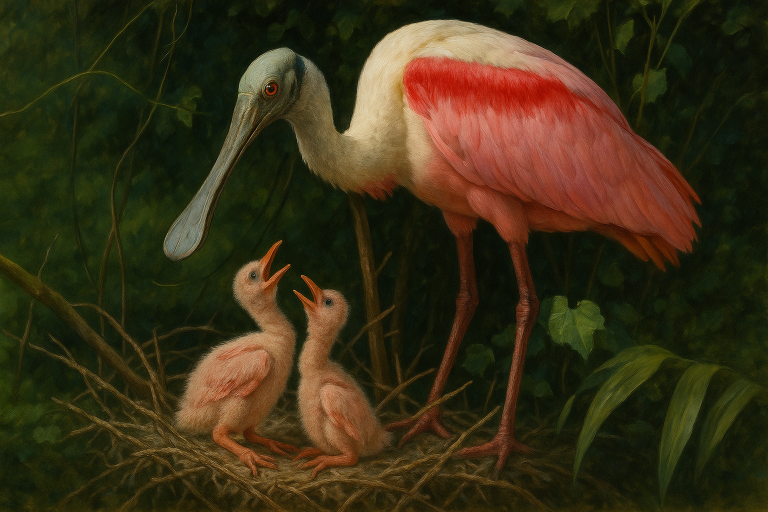Classic Bird Diorama Creators of the 20th-Century
Natural history museums in the 20th century showcased some of their most enchanting exhibits through bird dioramas. These re-creations of birds in their natural habitats combined scientific accuracy with multi-disciplinary artistic flair. Meticulously mounted bird specimens were set against panoramas of painted backgrounds and naturalistic foregrounds. The result was an immersive “window on nature,” captivating generations of visitors and conveying both educational and aesthetic value. This article explores the golden age of bird habitat dioramas, highlighting pioneering figures like Frank M. Chapman and Louis Agassiz Fuertes, the role of natural history illustration in achieving lifelike realism, and the contributions of major institutions such as the American Museum of Natural History in New York and the Natural History Museum in London. Along the way, we will examine classic examples of bird dioramas and discuss their artistic techniques, interdisciplinary creation process, historical context, and lasting legacy.
Historical Origins and the Rise of Bird Dioramas
The concept of the habitat diorama emerged in the late 19th century, evolving from earlier practices of simply displaying taxidermy specimens on stands or in arbitrary groupings. One early forerunner was Edward Thomas Booth, a Victorian-era naturalist in England who set out to depict every British bird species in realistic settings. Booth’s private museum, founded in Brighton, UK in 1874. featured hundreds of birds mounted in individual cases with background paintings and habitat elements copied from field sketches of the exact locations where he collected the birds. His displays were described as “a beautiful picture at once artistic and scientific” by contemporary observers, underscoring the dual emphasis on art and science.
Cliff colony of Northern Gannets, Edward Thomas Booth, Booth Museum of Natural History
Grey Heron nest, Edward Thomas Booth, Booth Museum of Natural History
By the turn of the 20th century, the habitat diorama, a scene combining a painted backdrop, three-dimensional models, and taxidermy, began to take hold in museums. In the United States, a watershed moment came in 1889 when taxidermist Carl E. Akeley created a small diorama of muskrats in a wetland for the Milwaukee Public Museum. This pioneering exhibit, often called the “Milwaukee style”, placed animal mounts in a detailed foreground environment with a curved painted background for depth, establishing a template for future habitat groups. Akeley’s innovative approach to taxidermy, sculpting anatomically accurate mannequins for the skins, also elevated the realism of dioramas and earned him the moniker “Father of Modern Taxidermy”.
Muskrat diorama, Carl E. Akeley, Milwaukee Public Museum
Extensive use of habitat dioramas for birds occurred at the American Museum of Natural History (AMNH) in New York under the guidance of Frank M. Chapman. Chapman, a young ornithologist hired by AMNH in 1888, found the museum’s bird collection displayed as a disorganized assembly of 12,000 mounted specimens. He envisioned far more engaging true-to-life habitat groupings that would educate the public about birds as living creatures in ecological context. Chapman’s very first attempt in 1899 was a 6-by-18-foot beach scene from Virginia, featuring nesting shorebirds against a painted vista of sand and sea. This was arguably the first bird habitat diorama at AMNH, and Chapman later proudly credited himself with originating the concept of museum “animal groups”, recreating specific geographic sites with flora and fauna together. In reality, such ideas were “in the air” and contemporaries like Akeley and others were also innovating independently. But Chapman’s contributions would soon prove singularly influential in the realm of bird dioramas.
Summer Bird-life of Cobb’s Island, Virginia. American Museum of Natural History
Frank M. Chapman and the Diorama as Conservation Tool
By the early 1900s, Frank M. Chapman had become the first curator of birds at AMNH and was busy transforming the museum’s exhibits. He methodically created habitat dioramas for birds of various regions, first focusing on species close to home. For example, he combined all birds found within 50 miles of New York City into seasonal display cases, showing them in appropriate breeding or winter plumage and habitats. He then expanded outward to depict bird life from across the Americas. Each diorama was based on an actual location that Chapman and colleagues had visited, ensuring scientific accuracy in the landscape, plant life, and arrangement of species. He insisted on sending teams of scientists, taxidermists, and painters to the very habitat being recreated, so that everything from the vistas to the grasses in the dioramas would be true to life. This on-site research was labor-intensive but paid dividends in fidelity. Even details like the angle of each feather or the exact hues of a distant horizon were calculated for verisimilitude.
Wading Birds diorama, American Museum of Natural History
Wading Birds diorama, nest close up, American Museum of Natural History
One of Chapman’s most famous early works was the diorama based on Pelican Island, Florida, unveiled in 1902. It portrayed wading birds nesting in a rookery with startling realism, from the sandy mangrove island setting down to the reflections on water. But this exhibit was more than just an artistic triumph; it became a powerful tool for conservation. Chapman strategically used the Pelican Island diorama to lobby President Theodore Roosevelt, a friend and fellow naturalist, to protect the real Pelican Island from rampant plume hunting. The effort succeeded with Roosevelt being so moved by the plight of the depicted birds that in 1903 he declared Pelican Island as the first federal bird reserve in the United States. Furthermore, this success proved to be the nucleus of today’s National Wildlife Refuge system. By letting the birds “speak for themselves” in lifelike displays, Chapman believed the public, and indeed policymakers, would be inspired to value and protect them. Many of the dioramas he directed focused on species in peril, from egrets, then being decimated for the plume trade, to whooping cranes.
The Wading Birds diorama inspires artists to this day, including this sketch by the author Michael Nagan
Chapman’s grand project culminated in the opening of the Hall of North American Birds at AMNH in 1902 which was later named in his honor. This hall eventually housed dozens of habitat dioramas representing ecosystems from Florida’s Everglades to Alaskan tundra. Each diorama was painstakingly prepared over years. Chapman himself often collected the bird specimens and made field sketches of the environment. He enlisted talented artists for the backgrounds and foreground details, and supervised taxidermists to mount birds in dynamic poses including taking the bold step of displaying some in flight. These were suspended from a domed ceiling painted to display the sky, clouds and other birds. The result was an immersive panorama that astonished viewers and drew widespread acclaim. Chapman’s philosophy, that a diorama should “recreate a specific geographical site” with absolute accuracy in topography, vegetation, and wildlife behavior became a guiding principle for future exhibit-makers.
Birds of the High Andes, American Museum of Natural History
Louis Agassiz Fuertes and the Art of Diorama Illustration
Critical to the success and realism of habitat dioramas was the work of natural history illustrators who provided the painted backgrounds and often advised on color and composition. Foremost among these artists in the early 20th century was Louis Agassiz Fuertes. Fuertes (1874–1927) is regarded as one of the greatest American bird painters, often hailed as the artistic heir to John James Audubon. His ability to capture the vivid colors, anatomy, and essence of birds was unparalleled. It is less widely known that Fuertes also played a direct role in museum dioramas, lending his talents to create their panoramic backdrops. In the first decade of the 1900s, Fuertes worked with Chapman at AMNH. He accompanied Chapman on field expeditions e.g. Colombia in 1911–1912. His job was to sketch and record habitat details and wildlife for later use in exhibits. Back at the museum, Fuertes painted some of the earliest backgrounds for the North American bird hall. Notably, the museum’s Flamingo Group (1904) featured a vibrant marsh sunrise scene painted by Fuertes, showing pink flamingos wading in tropical shallows. Decades later, when that diorama was updated, Fuertes’s original painting was so admired that it was preserved as a mural on its own. Fuertes’ artistry imbued the dioramas with a luminous, life-like quality. The skies glowed, the foliage felt alive, and subtle atmospheric perspective made the vista appear to stretch into the distance.
Flamingo mural, Louis Agassiz Fuertes, American Museum of Natural History
These backdrops were not mere scenery. They provided the illusion of depth and completed the habitat around the taxidermy specimens, effectively transporting viewers to a different place and time. Fuertes set a high bar for accuracy and beauty in these backgrounds, using his field observations and knowledge of bird behavior to make them scientifically correct yet artistically compelling. He would ensure that the plants depicted were exactly those found in the birds’ habitat, and that lighting and cloud patterns matched the time of day or season the scene was meant to portray. Such fidelity reinforced the educational message while the artistry delighted the eye. Fuertes’ involvement with AMNH’s exhibits also signaled the increasingly interdisciplinary collaboration behind dioramas. Museum curators partnered with fine artists, photographers, botanists, and taxidermists to achieve a unified, realistic display.
An artist working on the Birds of Paradise diorama at the American Museum of Natural History (circa 1945).
Fuertes was tragically killed in a train accident in 1927, but his legacy lived on through the dioramas he helped create and the many artists he influenced. One such artist was Francis Lee Jaques (1887–1969), who became a master background painter in the generation after Fuertes. Jaques was an accomplished painter of birds and landscapes who worked at AMNH from the 1920s through 1940s. In fact, Jaques was chosen to paint all the backgrounds for the museum’s ambitious Whitney Memorial Hall of Oceanic Birds, a hall of 18 dioramas depicting island bird life from the South Pacific to the sub-Antarctic. To prepare, he joined an expedition to Polynesia to gather sketch material firsthand. By employing a single artist to handle an entire hall, the museum ensured a consistent style and unity across diverse dioramas. Jaques’s backgrounds are celebrated for their dynamic compositions and portrayal of birds in flight. In one diorama he might paint a stormy seabird colony on cliffside, in another a serene tropical lagoon teeming with terns. His work, like Fuertes’, struck that balance of faithful detail and artistic mood that gives dioramas their magic.
The Little Diomede diorama, Louis Agassiz Fuertes, Whitney Hall of Oceanic Birds, American Museum of Natural History
Other Pioneers and Masters of Diorama Craft
Besides Chapman and Fuertes, numerous other individuals were instrumental in the golden age of bird dioramas. Carl Akeley, though primarily known for big-game mammal dioramas, deserves mention for pioneering techniques that benefitted all taxidermy exhibits. After his early muskrat diorama in Milwaukee, Akeley joined the Field Museum in Chicago and later AMNH, creating signature exhibits like the Four Seasons of the White-Tailed Deer (at the Field Museum and the Hall of African Mammals at AMNH. Akeley’s insistence on anatomical accuracy through sculpted internal manikins and dramatic yet natural poses raised the bar for lifelikeness in mounted animals. Bird diorama makers adopted these ideas when mounting birds. Rather than the stiff Victorian mounts, birds were now posed as if captured mid-action; preening, feeding chicks, or soaring with wings fully extended. At AMNH the taxidermist David J. Schwendeman became renowned for mounting birds in lifelike flying positions, seemingly weightless in mid-air. Schwendeman, the museum’s last staff taxidermist, carried forward Akeley’s legacy well into the mid-20th century, ensuring the birds in the dioramas looked ready to take wing.
In terms of background artistry, beyond Fuertes and Jaques, other painters made lasting contributions. James Perry Wilson was one such figure. In the 1940s–50s Wilson developed a mathematically rigorous approach to painting diorama backgrounds with correct perspective. Although Wilson is best known for mammal dioramas, he also painted some bird diorama backgrounds, and his techniques, like using grids and curved surfaces to avoid distortion, benefited the craft as a whole. Charles Abel Corwin and William R. Leigh at the Field Museum, and Bruno Liljefors, a famous Swedish wildlife painter whose style influenced dioramas, also deserve acknowledgment as part of the pantheon of talent feeding into this art-science form.
Ostrich and Warthogs, Akeley Hall of African Mammals, James Perry Wilson, American Museum of Natural History
At the Field Museum in Chicago, the Louisiana Wild Turkey diorama (circa 1910s) was a collaboration between collector James Perry Wilson, taxidermist Leon Pray and artist Charles Corwin. Its scientific value lay in highlighting heavy woods ecology, and artistically it features a beautifully rendered autumnal setting. Similarly, the Prairie Chicken diorama at the Field Museum showcased the booming courtship display of these grouse on a Midwest prairie lek, a behavior few would ever witness firsthand. By including such life history moments, dioramas transcended static displays and became stage shows of nature’s drama.
Louisiana Wild Turkey, Chicago Field Museum
Fred Stubbs was a British ornithologist who built detailed bird dioramas for the Oldham Museum in England around 1905 including a coastal seabird “stack” diorama praised for its artistry. Later he became a curator at the Natural History Museum in London. His career exemplifies how the diorama approach spread internationally. British institutions began to incorporate habitat displays influenced by both their own pioneers like Booth and the advancements made in American museums. One remarkable survivor is the Group of Capercaillie originally created by Edward Booth (mentioned above). It shows a male and female capercaillie in a pine forest setting and is still on display in Brighton. This diorama is historically significant as a Victorian piece (late 1800s) that directly led to the habitat diorama concept. Its painted backdrop and composition were precursors to what Chapman and others would later formalize. The artistry is comparatively stiff, but one can appreciate it as a tangible link between the era of gentleman collectors and the age of professional museum exhibits.
Group of Capercaillie, Booth Museum, Brighton UK
Techniques and Collaboration
One striking aspect of classic bird dioramas is how they were products of interdisciplinary collaboration, effectively early multimedia productions long before the digital age. A successful diorama required input from scientists to ensure factual accuracy in species, behaviors, and ecology, artists to create the visual scene, and skilled craftsmen to build the sets and mounts. Typically, the process began with fieldwork. An expedition to the chosen locale would collect specimen birds, often several of each species to allow for trial and error in mounting, and extensive reference materials including plant samples, color notes, soil and rock samples, panoramic photographs, and sketches. Participants on these trips could include an ornithologist like Chapman, a preparator/taxidermist, and a background painter such as Fuertes or Jaques. They worked in tandem to document everything needed to re-create a slice of nature back in the museum.
Back in the exhibition studio, the taxidermists would mount the bird skins on carefully sculpted forms, often in dynamic poses that told a story such as a predator and prey moment or a family of birds at a nest. Meanwhile, foreground artists constructed the base. Real dried grasses, leaves, and branches were often used. Sometimes these were specially treated e.g. Booth’s team baked grasses in sand ovens to preserve their green color. If real foliage was not suitable, artisans would fabricate imitation plants. Booth had fabric leaves made by milliners to mimic seasonal vegetation in his cases. Rocks and ground were modeled from plaster or papier-mâché and painted. Small details like insect life, nests, or seashells might be added to enhance realism.
The background painter, working on a large curved canvas, would then merge art with the three-dimensional foreground. To create the illusion of seamless depth, the painter often had to do trompe-l’oeil effects. For instance, painting distant parts of a log or tree that in reality had its nearer part protruding into the foreground. The background was usually curved in both horizontal and vertical planes, essentially a dome or half-dome. These were often lit cleverly from above to simulate natural light gradients. Perspective was carefully calculated so that a viewer at a given point would see an integrated scene with no jarring transitions. The smallest details were captured, even down to the exact shade of blue on the horizon based on measured atmospheric conditions.
All of this work could take months for a single diorama. The results, however, were worth the effort. Museum-goers found themselves peering at a frozen moment in time in some far-flung marsh or forest, often with a mix of awe and curiosity. It was this joy in materiality and physical presence, a direct encounter with a life-like scene, that gave dioramas a unique impact that still resonates in our era of digital images.
Brandt’s Cormorant diorama, American Museum of Natural History
Legacy of Natural History Dioramas
By the latter half of the 20th century, the fervor for building grand diorama halls began to wane. The 1950s and 60s saw museums shift towards other exhibit styles and the advent of documentary films and color photography provided new ways to show wildlife to the public. Additionally, changing ethical views made the idea of collecting large numbers of animals for exhibits less palatable, especially as some species became rare. Many museums put a pause on diorama-making, and a few even dismantled some old dioramas due to space or budget constraints. Yet, far from becoming irrelevant, the classic dioramas gained a certain revered, nostalgic status. They endured because they still had the power to educate and enchant. Children continued to press their faces to the glass in awe of the life-sized elephants, tigers and brilliant birds in mid-flight.
In recent decades, many institutions have undertaken conservation and restoration of their historic dioramas, treating them as valuable heritage. For example, AMNH’s bird halls were carefully refurbished. Taxidermy was cleaned, colors in backgrounds were refreshed, lighting was improved and they reopened to the public with renewed vibrancy, retaining every bit of their original charm. Smaller museums, such as the Gallery Oldham in the UK, have rediscovered old dioramas in storage and restored them to display, sometimes with updated interpretation connecting them to modern environmental themes such as using a vintage seabird diorama to discuss today’s ocean pollution.
One group worthy of particular note for its dedication to the preservation and advancement of natural history exhibit arts is the Institute for Natural History Arts (INHA), a nonprofit organization based in New Jersey. The group focuses on conservation, research, and education in the museum arts domain ensuring that the craft of building scientific displays, from taxidermy mounts to habitat dioramas, is documented, taught, and carried forward for future generations. By bridging classic techniques with modern best practices, the institute strives to keep these unique art forms and scientific preparation methods alive and evolving.
The Institute was founded by George A. Dante, Jr., an acclaimed taxidermist, sculptor, and natural history exhibit specialist. Dante established INHA after decades of working on restoring museum dioramas and realizing the need for an entity to formally document and teach exhibit creation techniques. Under his leadership as President, INHA is supported by a distinguished board of advisors composed of veteran museum professionals. Notable figures include Stephen C. Quinn, a renowned artist-naturalist who spent a lifelong career creating and managing dioramas at the American Museum of Natural History, and Dr. Peter Capainolo, an ornithologist and senior museum specialist (AMNH) who serves as INHA’s Curator of Birds. These and other advisors, drawn from institutions like the Smithsonian and international museums, bring expertise in fields ranging from zoology and ecology to scientific illustration and exhibit design, guiding the Institute’s educational and research programs.
The INHA’s team contributes expert knowledge to high-profile exhibit renovations and helps develop best practices for exhibit preservation. INHA also publishes insights from its research and projects via newsletters, social media, and presentations, aiming to foster a community of natural history artists and scientists. Each of these efforts, from training workshops to artifact curation, exemplifies the Institute for Natural History Arts’ guiding purpose: to keep the tradition of natural history art alive, relevant, and enriched by both past wisdom and modern innovation.
The legacy of the classic bird diorama creators is thus a living one. Frank M. Chapman’s name lives on in the halls he founded, and his vision of nature in the museum continues to inspire wonder and respect for wildlife. Louis Agassiz Fuertes’ paintings are still admired on the diorama walls, and reproductions of his bird art grace modern books and posters, attesting to his lasting influence on how we see birds. The likes of Jaques, Akeley, and others have become almost legendary figures among museum professionals – their techniques still studied and taught in exhibit design courses. Moreover, their work helped spawn a broader “global movement to protect wild animals and wild places,” by instilling love for nature in countless young visitors.
In conclusion…
The classic bird dioramas of the 20th century stand as extraordinary intersections of art, science, and education. They were born in an era of exploration and nascent conservationism, crafted by dedicated individuals who believed in the power of visual storytelling grounded in scientific truth. Museums around the world proudly display these heritage exhibits, which remain as engaging today as ever. As long as one can step from a noisy museum hall into the quiet illusion of a marsh at dawn, hearing imaginary herons croak and seeing dew on painted blades of grass, the legacy of Chapman, Fuertes, and the other diorama masters will continue to thrive, reminding us of the beauty of nature and our responsibility to understand and preserve it.
David Schwendeman works on the juvenile for his Bald Eagle diorama,
American Museum of Natural History
References
- Chapman, Frank M. 1908. Camps and Cruises of an Ornithologist. New York: D. Appleton and Company.
- Chapman, Frank M. 1917. The Distribution of Bird-Life in Colombia: A Contribution to a Biological Survey of South America. New York: American Museum of Natural History.
- Chapman, Frank M. 1937. Autobiography of a Bird-Lover. New York: D. Appleton-Century Company.
- DenHoed, Andrea. 2015. “A Museum Diorama’s Uneasy Still Life.” The New Yorker, August 14, 2015. https://www.newyorker.com/books/page-turner/a-museum-dioramas-uneasy-still-life
- Fuertes, Louis Agassiz. 1926. Birds of America. Garden City, NY: Doubleday, Page & Company.
- Jaques, Francis Lee. 1945. The Audubon Society Nature Guides: A Jaques Portfolio. Minneapolis: University of Minnesota Press.
- Mayr, Ernst. 1982. The Growth of Biological Thought: Diversity, Evolution, and Inheritance. Cambridge, MA: Harvard University Press.
- Powell, James. 2012. Museum Masterpieces: The Art of Diorama at the American Museum of Natural History. New York: American Museum of Natural History Press.
- Quinn, Stephen C. 2006. Windows on Nature: The Great Habitat Dioramas of the American Museum of Natural History. New York: Abrams.
- Rice, William Gorham. 1913. Frank M. Chapman and the American Museum of Natural History. New York: The Outlook Company.
- Rux, Erika. 2007. “Francis Lee Jaques and the Bell Museum Dioramas.” Minnesota History 61 (3): 122–139.
- Schwendeman, David J. 1962. “New Techniques in Taxidermy and Diorama Work.” Curator 5 (3): 179–185.
- Yanni, Carla. 2005. Nature’s Museums: Victorian Science and the Architecture of Display. Baltimore: Johns Hopkins University Press.
- Walters, Michael. 1994. A Concise History of Ornithology. New Haven: Yale University Press.
- Wilson, James Perry. 1947. “Perspective and Illusion in Diorama Painting.” Curator 2 (1): 31–42.

